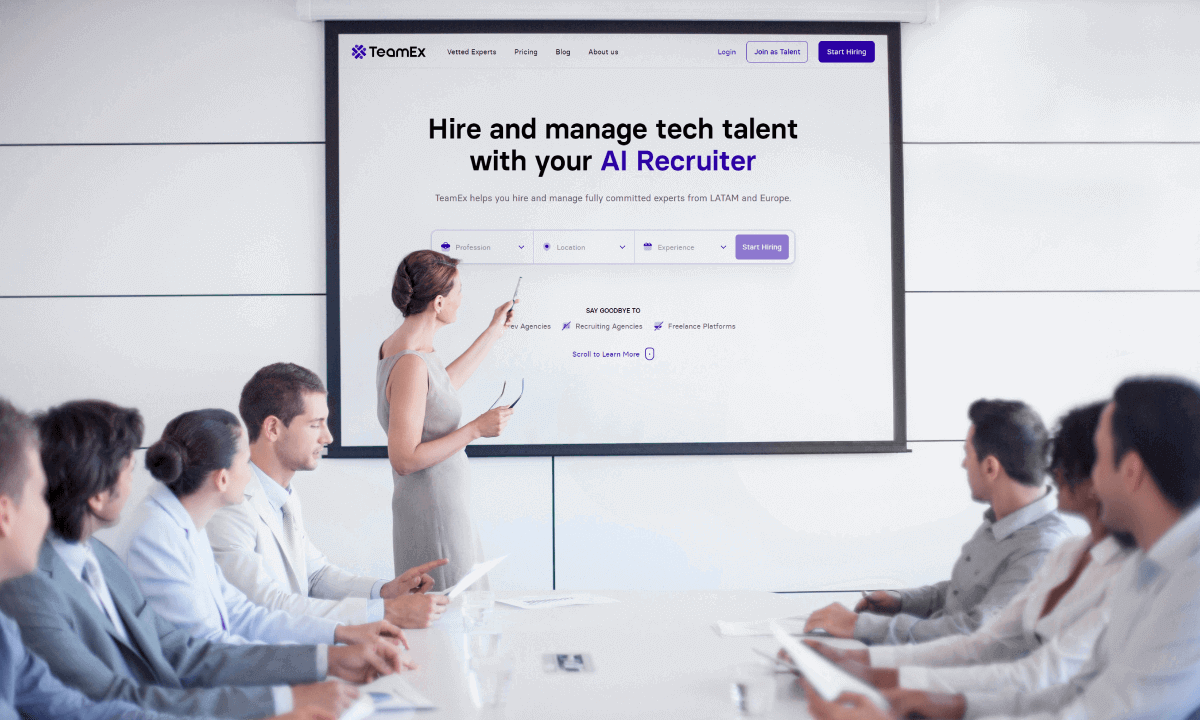The importance of cultural fit in recruiting is growing across industries and sectors. According to a Harvard Business Review study, employees are likelier to maintain a job position when culture focus is applied during and after hiring. Modern AI recruiters have acquired the capacity to implement a culture-focused approach to hiring, transforming talent acquisition.
Let’s explore the differences between technical and cultural alignment in recruitment and how AI recruiting helps ensure new hires fit well into the company’s culture and work environment.
Technical vs. Cultural Fit in Recruitment
Technical fit refers to a candidate's skill set, experience, and capability to perform a particular role. On the other hand, cultural fit, or organizational fit, refers to a candidate's values, beliefs, outlook, and behavior and how well they align with the organization. Combining them both ensures effective hiring and enhances employee retention in the long run.
Here is a more detailed comparison of technical and cultural fit based on the respective hiring activities, key factors, and importance.
Hiring Activities Associated with Technical and Cultural Fit
Technical Fit in Recruitment | Cultural Fit in Recruitment |
|---|---|
Resume Screening: Identifying specific skills, certifications, and experience that align with the job requirements | Behavioral Interviews: Assessing alignment with company values |
Skill Assessments and Tests: Gauging candidates' proficiency in relevant areas | Personality Assessments: Determining candidates' compatibility with the organization's work culture |
Technical Interview: Assessing problem-solving abilities and specific skill sets during interviews | Workplace Simulations: Observing candidates in real-world scenarios |
Portfolio Review: Evaluating past projects and accomplishments | Team-Based Interviews: Assess how well candidates mesh with existing staff |
Reference Checks: Verifying past performance and technical competence through references | Social Media Review: Reviewing candidates' public social media profiles for indications of their values and interests |
Key Factors Considered in Technical and Cultural Fit in Recruitment
Technical Fit in Recruitment | Cultural Fit in Recruitment |
|---|---|
Role-Specific Skill Requirements | Team Dynamics |
Certification or Licensing | Company Core Values and Mission Alignment |
Technical Problem-Solving | Adaptability to Organizational Culture |
Specific Industry Experience | Retention and Employee Engagement |
Importance of Technical and Cultural Fit in Recruitment
Technical Fit in Recruitment | Cultural Fit in Recruitment |
|---|---|
Job Competence and Productivity: - Ensures candidates possess the required skills and experience to perform job tasks efficiently. - Leads to higher productivity as employees can quickly contribute without extensive training. | Employee Satisfaction and Engagement: - Employees who align with the company's values and culture tend to be happier and more engaged. - Increases morale and motivation, leading to better performance. |
Quality of Work: - Technical proficiency reduces errors and enhances the quality of output. - Critical for roles where accuracy and precision are paramount, such as engineering or finance. | Team Cohesion and Collaboration: - Cultural fit fosters a sense of belonging, improving teamwork and communication. - Reduces conflicts and creates a harmonious work environment. |
Reduced Training Costs: - Candidates who meet technical requirements need less training, saving time and resources. - Allows companies to focus training efforts on more advanced or role-specific areas. | Retention and Reduced Turnover: - Employees who share the company's values are less likely to leave, reducing turnover costs. - Longer retention allows companies to invest in employee growth and development. |
Meeting Industry Standards and Compliance: - Certain industries require specific certifications and skills (e.g., healthcare, legal, finance). - Ensures compliance with industry regulations and standards. | Brand Ambassadorship: - Employees with strong cultural alignment often become brand ambassadors. - Positively impacts the company's reputation and helps attract like-minded candidates. |
AI's Role in Enhancing Cultural Fit
AI-powered recruitment platforms can analyze technical skills and cultural attributes using advanced algorithms and data analysis, providing a comprehensive view of each candidate. The latest tools, like TeamEx, integrate technical and cultural aspects by combining insights into company values, team dynamics, and technical skills.
AI algorithms identify vital traits that align candidates with company culture. Predictive analytics and machine learning are used to assess historical data on successful hires to predict which candidates are likely to fit well culturally. Machine learning algorithms continuously refine their recommendations based on outcomes. Additionally, natural language processing (NLP) is used to analyze candidates' language during interviews and assessments to identify communication styles, values, and personality traits indicative of an excellent cultural fit.
The table below presents the technical and culture-focused hiring activities that an AI recruiter can perform.
Technical Recruitment Activities that an AI recruiter, like our Diza, can perform | Culture-Focused Recruitment Activities that an AI recruiter, like our Diza, can perform |
|---|---|
Resume and Portfolio Checks - Check resumes for specific technical skills, certifications, and educational backgrounds. - Review portfolios for past projects and accomplishments. | Behavioral Interviews - Ask open-ended questions about teamwork, conflict resolution, and work preferences, such as "Describe a time when you had to work with a difficult team member." - Analyze the candidate’s answers, including tone and intonation, gestures, posture, etc. |
Skill Assessments and Tests - Assign coding challenges, case studies, or technical questions. - Use standardized tests to measure proficiency in specific tools or software. | Personality and Psychometric Assessments - Conduct standardized personality assessments like MBTI or Big Five. - Analyze results to see how candidates' personalities align with the organization's core values. |
Technical Interview Questions - Ask scenario-based or direct questions to gauge understanding. - Include real-world problems relevant to the role. | Workplace Simulations - Organize role-playing activities or day-in-the-life simulations. - Monitor candidates' teamwork, communication, and adaptability. |
Certifications and Licenses - Verify certifications like PMP (Project Management), CPA (Accounting), or professional licenses. - Check expiration dates and relevant training. | Team-Based Interviews - Involve potential colleagues in the interview process. - Observe candidates' communication style and willingness to collaborate. |
Reference Checks: Using AI-powered chat and messaging, you can easily - Ask former supervisors or colleagues about candidates' specific contributions and technical skills. - Inquire about work quality and reliability. | Values and Mission Alignment Questions - Ask direct questions about candidates' values and how they align with the organization, such as "What aspects of our company mission resonate most with you, and why?" - Analyze the candidate’s answers, including tone and intonation, gestures, posture, etc. |
Social Media and Online Presence Review - Check public profiles on platforms like LinkedIn, Twitter, or personal blogs. - Look for indications of professionalism, volunteer work, or community engagement. |
Ready to optimize your hiring journey?
TeamEx reduces hiring costs by 95%, hiring time by 90%, and ongoing talent management cost by 50%
Schedule a Call







































































Benefits of Emphasizing Cultural Fit
Embracing a culture-centered approach enhances hiring efforts and can help you master remote hiring. Here are some of the benefits of ensuring cultural fit in recruiting:
Improved employee satisfaction
Team cohesion
Higher productivity
Reduced turnover
Enhanced employer reputation
In addition, it creates a shared vision, promotes open communication, and promotes internal talent growth.
Challenges and Considerations
Maintaining a balanced approach that values technical skills and cultural alignment is crucial. Defining cultural fit in terms of core values and establishing standardized yet flexible criteria helps accommodate diverse perspectives and take the best of the two worlds.
In addition, the efficiency of AI algorithms depends on the quality of training data. Perpetuating existing biases found in the input data can lead to discriminatory hiring practices. Using diverse data in the training process and fairness guidelines is essential for avoiding such occurrences. Therefore, evolving solutions, such as the AI-powered TeamEx talent platform, utilize an extensive and diverse training database continuously developed and expanded with fresh and relevant material.
Conclusion
AI in recruitment is shifting from technical fit to cultural fit, focusing on the candidate's alignment with the organization's values, beliefs, and behavior. Prioritizing cultural fit leads to higher employee satisfaction, engagement, team cohesion, collaboration, and reduced turnover.
Ensuring cultural fit in recruitment involves personality assessments, behavioral interviews, workplace simulations, team-based interviews, and social media reviews. AI recruiters can automate up to 95% of hiring activities.











































































